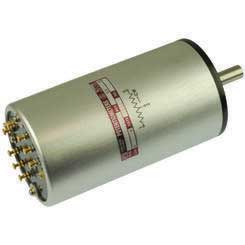Construction of wire wound potentiometers
The basic construction of wire wound potentiometer is made of nichrome wire wound on a doughnut-shaped core of bracket and enclosed with an insulating coating. A window is left in the insulating cover, which exposes the resistive wire. There is rotating shaft at the center of the core. The shaft moves an arm and a contact point from end to end of the resistance element. The diameter of a body can range from less than an inch or more. There are three terminals coming out of a potentiometer. The outer two terminals are the two end points of the resistances elements and they are fixed. The middle terminal is the rotating contact. it is variable. The variation is provided by a wiper connected to a control shaft. When a control shaft is moved, the wiper moves over a resistive element. This movement proves a continuous variation in resistances between the middle terminal and either outside terminal. By moving the control shaft on either side of the middle terminal, any part of the input voltage is taken out as the output.


